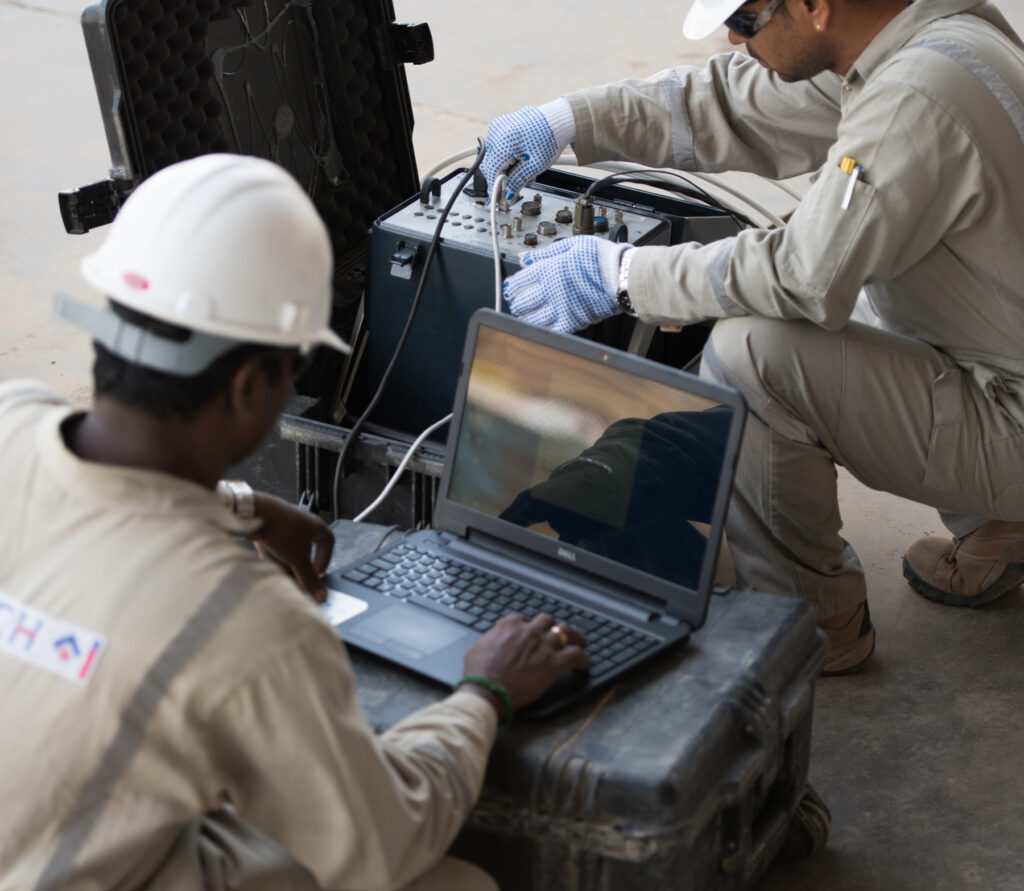Eddy Current Testing (ECT) is used to inspect non-ferrous tubes. It can detect and size cracks, corrosion, erosion and mechanical damage in austenitic stainless tubes and in copper alloys. It is widely used in the Refining, Petrochemical and Power generation Industries for inspection of non-ferromagnetic tubes. ECT is a very fast inspection method. A typical inspection rate for a 5-6 meter stainless steel heat exchanger is up to 800 tubes over a 12-hour shift. This depends both on how clean the tubes are and the number of defects or indications needing evaluation
Remote Field Testing (RFET) is used to readily detect erosion losses in low alloy steels (ferromagnetic) and in ferritic stainless steels. Pits, corrosion and mechanical damage can be detected. RFET inspections should be followed by IRIS inspection if shallow pits or general thinning is suspected. One limitation of RFET is that it not very good for detecting gradual wall loss. Also pits smaller than 6% of the tube cross sectional area cannot be detected. This is because of the low frequencies used for RFET inspection. We recommend backing up all Remote Field Testing work with IRIS inspection if shallow pits or general thinning is suspected. RFT is a relativity fast technique. For example, it is possible to test from 400-420 5-6 meter heat exchanger tubes in a 12-hour shift. This depends both on how clean the tubes are and to some extent the number of defects or indications needing evaluation.

